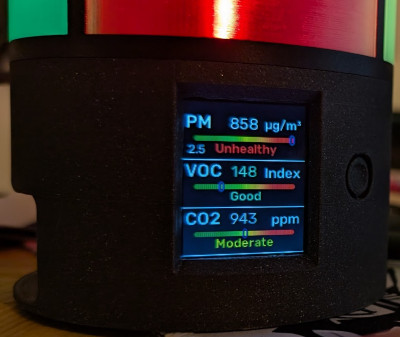There are all kinds of air quality sensors on the market that rely on all kinds of electro-physical effects to detect gases or contaminants and report them back as a value. [lucascreator] has instead been investigating a method of determining air quality that is closer to divination than measurement—using computer vision and a trained AI model.
The system relies on an Unihiker K10—a microcontroller module based around the ESP32-S3 at heart. The chip is running a lightweight convolutional neural network (CNN) trained on 12,000 images of the sky. These images were sourced from a public dataset; they were taken in India and Nepal, and tagged with the relevant Air Quality Index at the time of capture. [lucascreator] used this data to train their model to look at an image taken with a camera attached to the ESP32 and estimate the air quality index based on what it has seen in that existing dataset.
It might sound like a spurious concept, but it does have some value. [lucascreator] cites studies where video data was used for low-cost air quality estimation—not as a replacement for proper measurement, but as an additional data point that could be sourced from existing surveillance infrastructure. Performance of such models has, in some cases, been remarkably accurate.
[lucascreator] is pragmatic about the limitations of their implementation of this concept, noting that their very compact model didn’t always perform the best in terms of determining actual air quality. The concept may have some value, but implementing it on an ESP32 isn’t so easy if you’re looking for supreme accuracy. We’ve featured some other great air quality projects before, though, if you’re looking for other ways to capture this information. Video after the break.
Continue reading “Divining Air Quality With A Cheap Computer Vision Device”


















